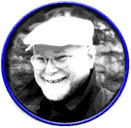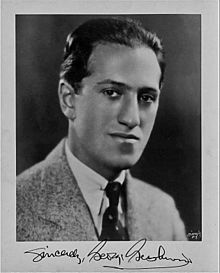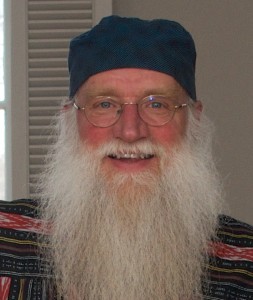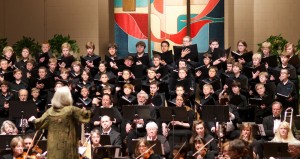Marlene’s Musings
January 9, 2016

Eric Stokes
Music is for the people.
For all of us,
the dumb, the deaf, the dog & jays, handclappers,
dancing moon watchers,
brainy puzzlers, abstracted whistlers,
finger-snapping time keepers,
crazy, weak, hurt, weedkeepers, the strays.
The land of music is everyone’s nation – her tune,
his beat, your drum,
one song, one vote.
-Eric Stokes
I love that poem. Music is everywhere for everyone. As I lie here with my leg aloft to heal my fused ankle, I have the luxury of time to ponder things like: “Where does music come from? Is it unique to our planet? Or, perhaps, is it part of the vast universe?”
Music emerges in extreme complexity from birds, it communicates messages from a pack of wolves or the surly cat, it roars loudly in rushing rapids, its complex rhythms are in the rain, in our heartbeats. It is in the vibrations of the earth – of course. We would know nothing about music if we hadn’t heard it there first, but how did humans ever figure out how to create the written language of music and further, how does the composer lift our emotions to the surface with just a few notes? How does a composer describe a country, a river, a thunderstorm, heartache, a party, or a whole culture of people?
 We are doing Gershwin, An American in Paris for our February cycle (click here for our concert schedule). Gershwin figured out how to musically describe who we are as Americans. I asked my daughter, “What does it mean to be an American?” She replied, “to be free, to be independent and to get to do what you want and say what you want… as long as you don’t hurt anyone else. To have a dream for yourself.” Does Gershwin’s music describe that? I think so. But how?
We are doing Gershwin, An American in Paris for our February cycle (click here for our concert schedule). Gershwin figured out how to musically describe who we are as Americans. I asked my daughter, “What does it mean to be an American?” She replied, “to be free, to be independent and to get to do what you want and say what you want… as long as you don’t hurt anyone else. To have a dream for yourself.” Does Gershwin’s music describe that? I think so. But how?
Gershwin’s parents were émigrés. As a young boy, George took piano lessons from Mr. Hambitzer, a musician who believed that any music that was any good had to come from European composers. So, young George practiced his Bach two part inventions and Mozart sonatas and play them for Mr. Bitzner every week. Sometimes, after playing his Mozart, George would say, “Hey, Mr. Bitzner, Listen to this, I wrote it this week. Isn’t it cool!!” Mr. Bitzner had absolutely no patience for that kind of music. In fact, he wrote a letter to George’s parents saying, “Your son is very talented but he keeps wanting to play this jazz stuff, this schlock. I simply will not allow it.”
George had the courage to continue to compose the music he heard in his head – music that was rooted in American soil – Native American chant and dance, African American gospel, spiritual and jazz. Jazz music is the ultimate in freedom – you play a tune and then you improvise something based on the tune – you get to do what you want as long as you keep the basic harmony and rhythm in tact. The immigrants who came here seeking freedom were surely improvisers – they had to create things for themselves out of basic surroundings. They were risk takers and perhaps a little wild – necessary character traits to chart such a perilous journey. Americans recognized themselves in Gershwin’s music and he became a household name.


But the mystery! How is it that when we hear George Gershwin’s music we recognize ourselves in it? 12 different notes put together in such a way as to describe us? Is it the dominant chords that are prevalent throughout that include both the perfect and the flat fifth? Is it the swinging eighths? Is it the 25 key changes that suggest extreme flexibility?
Perhaps after three months of keeping my leg up I’ll be closer to some kind of answer – or not.
It’s enough to ponder.
Youthful Inspiration
/in Family Concert, WSO NewsMarlene’s Musings
July 25, 2016
Du ring the summer when the WSO is off, I do other fun stuff.
ring the summer when the WSO is off, I do other fun stuff.
For the past 7 years, I have been very fortunate to conduct the showcase concert for the Young Artist World Piano Festival held in St. Paul each summer. Two winners are chosen from the competitors who come from all around the globe: one winner age 8 to 12, and one winner age 13 to 18.
Every contestant plays the same piece. This year, it was Mozart Piano Concerto #17, 1st movement and Schumann Piano Concerto.
Next up for me:
This orchestra is made up of musicians from the Minnesota Orchestra, St. Paul Chamber Orchestra and many other national orchestras who come to Brainerd to enjoy the beauty of our lakes.
If you’re in Brainerd on Sunday, August 7 at 2:00, come to the free concert but come early – it’s always a packed house.
Pondering the Mystery
/in Wayzata Symphony Orchestra, WSO NewsMarlene’s Musings
January 9, 2016
Eric Stokes
Music is for the people.
For all of us,
the dumb, the deaf, the dog & jays, handclappers,
dancing moon watchers,
brainy puzzlers, abstracted whistlers,
finger-snapping time keepers,
crazy, weak, hurt, weedkeepers, the strays.
The land of music is everyone’s nation – her tune,
his beat, your drum,
one song, one vote.
-Eric Stokes
I love that poem. Music is everywhere for everyone. As I lie here with my leg aloft to heal my fused ankle, I have the luxury of time to ponder things like: “Where does music come from? Is it unique to our planet? Or, perhaps, is it part of the vast universe?”
Music emerges in extreme complexity from birds, it communicates messages from a pack of wolves or the surly cat, it roars loudly in rushing rapids, its complex rhythms are in the rain, in our heartbeats. It is in the vibrations of the earth – of course. We would know nothing about music if we hadn’t heard it there first, but how did humans ever figure out how to create the written language of music and further, how does the composer lift our emotions to the surface with just a few notes? How does a composer describe a country, a river, a thunderstorm, heartache, a party, or a whole culture of people?
Gershwin’s parents were émigrés. As a young boy, George took piano lessons from Mr. Hambitzer, a musician who believed that any music that was any good had to come from European composers. So, young George practiced his Bach two part inventions and Mozart sonatas and play them for Mr. Bitzner every week. Sometimes, after playing his Mozart, George would say, “Hey, Mr. Bitzner, Listen to this, I wrote it this week. Isn’t it cool!!” Mr. Bitzner had absolutely no patience for that kind of music. In fact, he wrote a letter to George’s parents saying, “Your son is very talented but he keeps wanting to play this jazz stuff, this schlock. I simply will not allow it.”
George had the courage to continue to compose the music he heard in his head – music that was rooted in American soil – Native American chant and dance, African American gospel, spiritual and jazz. Jazz music is the ultimate in freedom – you play a tune and then you improvise something based on the tune – you get to do what you want as long as you keep the basic harmony and rhythm in tact. The immigrants who came here seeking freedom were surely improvisers – they had to create things for themselves out of basic surroundings. They were risk takers and perhaps a little wild – necessary character traits to chart such a perilous journey. Americans recognized themselves in Gershwin’s music and he became a household name.
But the mystery! How is it that when we hear George Gershwin’s music we recognize ourselves in it? 12 different notes put together in such a way as to describe us? Is it the dominant chords that are prevalent throughout that include both the perfect and the flat fifth? Is it the swinging eighths? Is it the 25 key changes that suggest extreme flexibility?
Perhaps after three months of keeping my leg up I’ll be closer to some kind of answer – or not.
It’s enough to ponder.
I Hold In My Hands…
/in Amazing Guest Artists, Wayzata Symphony Orchestra, WSO NewsMarlene’s Musings
October 26, 2015
On any given page there are hundreds of details to figure out – transpositions, harmonies, phrase structures, dynamic balances, articulation nuances, rhythmic intricacies. You tear it all down for your own understanding and then put it back together for the full effect. After all that, it really does become a part of you. So, when the time comes to lift the print off the page, you really hope you are honoring the composer’s truest “self.”
This concert is exciting because we will perform three pieces, all written within the last 10 years.
All are accessible and thrilling to experience on both sides of the podium and if you ask, I’ll be happy to put any or all of the scores in your hands.
Out of This World!
/in Amazing Guest Artists, Wayzata Symphony Orchestra, WSO NewsMarlene’s Musings
September 1, 2015
Karim’s music has been performed all over the world, including Carnegie Hall, Disney Hall in L.A., and London’s Zankel Hall. He has received many awards for his classical music, film scores and video games. Currently, Orbit is played hourly at the California Space Center – permanent home of the Space Shuttle Endeavor. Over three million people have already heard his composition.
While Karim is in the Twin Cities, we have scheduled for him to make presentations at local high schools and colleges. His journey to being a composer is really fascinating! He was an aerospace engineering student before becoming a composer and, as you might imagine, has a keen interest in the links between science and music. He is a pilot, a certified Coast Guard skipper, a scuba diver and a trombone player! His inspiring story will encourage young people to follow their dreams in whatever arena they choose.
Please join us on October 11 at 3:00 at Wayzata Community Church for this free performance!
2015-16 Season Preview: Climbing Higher
/in Wayzata Symphony Orchestra, WSO NewsMarlene’s Musings
July 5, 2015
The WSO has so much in store for the 2015 – 16 season: A world premiere, a composer in residence, well-known soloists and as always, we perform works from the standard repertoire as well as unfamiliar, fabulous creations.
Guest Artist: Adam Kuenzel, Principal Flute, MN Orch
Pre-concert talk with composer Karim Elmahmoudi: 2:00
Concert: 3:00 Wayzata Community Church
Guest Composer: Timothy Mahr
Guest Artist: Diana Lee Lucker, Organ
WSO Concerto Competition winner: Tori Okwabi, Clarinet
3:00 Wayzata Community Church
Guest Artist: Patrick Harison, Accordion and Bandoneon
Feb 14: 3:00 Wayzata Community Church
Feb 21: 3:00 St. Andrew’s Lutheran Church Mahtomedi
Guest Artist: Maria Jette, Soprano
May 1: 3:00 Wayzata Community Church
May 7: 7:30 Trinity Lutheran Church Stillwater
All of our concerts are free and open to the public with no ticket required. I hope to see you at any or all of our exciting programs!
Why do family concerts?
/in Family Concert, Wayzata Symphony Orchestra, WSO NewsMarlene’s Musings
April, 2015
The Russian composer, Rimsky-Korsakov, had never heard an orchestra until his father took him to St. Petersburg to enroll in the College of Naval Cadets. He was 12 years old. When he went to the opera it was not the stage spectacle or the singing, but the great sound rising from the pit that excited him most. Early in 1857, he wrote home:
Imagine my joy, today I’m going to the theater! I shall see Lucia! I shall hear the enormous orchestra and the tam-tam!
That is the kind of experience many musicians tell of their first exposure to music. For me, it was hearing Stravinsky’s Firebird Suite for the first time. For others, it was when the MN Orchestra came to their elementary school to give a concert. And for many young New Yorkers, attending Leonard Bernstein’s Young People’s Concerts with the New York Philharmonic established a life-long love of music.
“You know what music is? God’s little reminder that there’s something else besides us in the universe; harmonic connection between all living beings, everywhere, even in the stars.”
Music is organic to the earth and therefore, to us.
For our family-friendly concerts on May 3 and May 9, we will feature all those glorious sounds, section by section, and then join forces for Rimsky-Korsakov’s masterfully orchestrated Capriccio Espagnol and Klaur Badelt’s, Pirates of the Caribbean. There might even be a visit from Jack Sparrow!
Verdi Requiem – Opera in Disguise
/in Amazing Guest Artists, Wayzata Symphony Orchestra, WSO NewsMarlene’s Musings
January, 2015
I have been a lover of great singing since I was a kid. My paternal grandmother, though not an opera singer per se, was soprano soloist in their Lutheran Church in Austin, MN. She had the most glorious voice and would often hum as I nestled in for a cuddle on the couch. Very happy memories, indeed!
Although Verdi’s Requiem is not an opera, it cannot be performed or conducted unless one has a love and an understanding of opera. The four vocal soloists will be required to display virtuosity comparable to many of Verdi’s great arias. Our soprano will climb to a breathtaking high C at the climax of the final movement as she sings, “Deliver me, Oh Lord, from eternal death on that fateful day.” Spine chilling!
Everyone will be challenged by the extreme dynamic range which goes from f f f f to ppppp! One rarely sees five pianos in any score.
For Verdi, who was not religious, this work speaks about the fear of death in very human terms. He does not shy away from the thought that death and the afterlife might not be a pleasant experience. That fear of uncertainty is no more palpable than in the Dies Irae where the solo instrument is the bass drum. It is bone-crunching, terrifying music complete with 8 trumpets placed antiphonally, proclaiming the approaching day of judgment when all sins will be revealed.
This is dramatic music at its best and with Orchestra Hall as our venue, the electrifying energy in the music will be magnified onstage.
Never Say Never
/in Wayzata Symphony Orchestra, WSO NewsMarlene’s Musings
November, 2014
Never say Never
Why is it such a difficult piece? Simply put, it is full of music we, as musicians, don’t play very often. We were all trained using Western European models – major and minor scales, symmetrical rhythms and phrases. Bartok asks us to go way beyond those perimeters. Yes, he was a huge fan of Bach so there are traditional harmonies in some places AND many fugues and fugatos. He also admired Schoenberg so there are whole-tone, pentatonic and artificial scales. But, most interestingly, Bartok was a great exponent and recorder of folk music. With a primitive Edison cylinder machine Bartok travelled all around Hungary and the surrounding countries, recording and then transcribing thousands of songs. We think of folk music as simple and easily singable but, if you’re from Hungary or the Czech Republic, you didn’t grow up singing the folk tunes we did. The music Bartok recorded became influential in everything he wrote. Those melodies, rhythms and harmonies were foreign to the Western European ear. BUT folk music of any kind is compelling because it speaks of the human experience. I think that is one of the many reasons why Bartok’s Concerto for Orchestra became an instant success.
When this piece was written Bartok felt his composing life was over. In 1943, weighing only 87 pounds, laying in a hospital bed suffering from symptoms of Leukemia which would eventually kill him, he was visited by the great conductor, Koussevitsky. He had been urged to do so by violinist, Joseph Szigeti and conductor, Fritz Reiner. All three icons of music loved Bartok’s music and did not want his creativity to end. They offered him a commission to write a work for the Boston Symphony. Initially he said “no” but an envelope with a sizeable down payment was left bedside and needing money desperately, Bartok accepted. Within 7 weeks, he had completed the masterpiece we all know and love.
So, with humility and LOTS of individual practice, we will perform Bartok’s Concerto on Nov. 16. I can’t wait!
Osmo Vänskä Joins the WSO!
/in Amazing Guest Artists, Wayzata Symphony Orchestra, WSO NewsMarlene’s Musings
September, 2014
Two other audience favorites round out the first program. Sibelius wrote the tone poem, Finlandia, at a time when Finland was under oppressive Russian rule. The hymn heard near the end of the piece became Finland’s national anthem and continues to be heard whenever a Finnish athlete wins Olympic gold.
Grieg’s Peer Gynt Suite contains some of the most recognizable tunes in the orchestral repertoire – Morning, Solveig’s Song, Anitra’s Dance, In the Hall of the Mountain King. WSO’s amazing musicians will bring their A-game to lift the music off the page.
See you on October 12th!
World Premieres by Daniel Kallman
/in Amazing Guest Artists, Family Concert, Wayzata Symphony Orchestra, WSO NewsMarlene’s Musings
April, 2014
Studying scores is a blast for me. But, studying a score that is brand new is even better. Holding a new score in your hands is a humbling thing, sort of like holding a new-born baby in your arms. You feel the wonder of a new creation and you feel the tremendous responsibility to try and nurture its path forward. The task is to figure out what is there, beyond notes, rhythms, articulations and dynamics. You try to get deeper. It takes a long time of study to begin to do that but when the desire is there, the time to do it becomes inconsequential.
Sea Creatures
 I have known of Daniel Kallman’s music since hearing a piece he wrote years ago, performed by Plymouth Music Series (now Vocalessence) under the direction of Philip Brunelle. Since then I have heard many more of his masterful creations, performed by MN Orchestra and many other ensembles. In 1997, I commissioned Dan to write a work for Halama Wind Octet. We premiered Sea Creatures at Wayzata Community Church and it was recorded by MPR. It is a fabulous piece that has been published by Boosey and Hawkes and is now performed all over the world.
I have known of Daniel Kallman’s music since hearing a piece he wrote years ago, performed by Plymouth Music Series (now Vocalessence) under the direction of Philip Brunelle. Since then I have heard many more of his masterful creations, performed by MN Orchestra and many other ensembles. In 1997, I commissioned Dan to write a work for Halama Wind Octet. We premiered Sea Creatures at Wayzata Community Church and it was recorded by MPR. It is a fabulous piece that has been published by Boosey and Hawkes and is now performed all over the world.
Dan and I have talked for several years about trying to procure the funding for the full orchestration. With help from the MN State Arts Board, the dream has come to fruition. Sea Creatures is a six-movement work. Prior to each movement, there is narration concerning aspects of the earth’s oceans. The four middle movements – Dolphin, Puffer Fish, Moray Eel and Shark – are musical descriptions of those remarkable creatures of the sea.
Jabberwocky
 As part of the MSAB grant, Dan has also written a piece for the amazing MN Boychoir, directed by Mark Johnson. The piece, Jabberwocky, uses the text from Through the Looking Glass by Lewis Carroll. The text uses lots of portmanteaus. For example, “galumphing,” “frumious,” and “huffish.” Dan’s music brilliantly ‘paints’ the made-up words. I’m certain this piece, along with the fully orchestrated Sea Creatures, will get many future performances by ensembles nationally and internationally.
As part of the MSAB grant, Dan has also written a piece for the amazing MN Boychoir, directed by Mark Johnson. The piece, Jabberwocky, uses the text from Through the Looking Glass by Lewis Carroll. The text uses lots of portmanteaus. For example, “galumphing,” “frumious,” and “huffish.” Dan’s music brilliantly ‘paints’ the made-up words. I’m certain this piece, along with the fully orchestrated Sea Creatures, will get many future performances by ensembles nationally and internationally.
What a thrill to be the facilitators of their first performances!